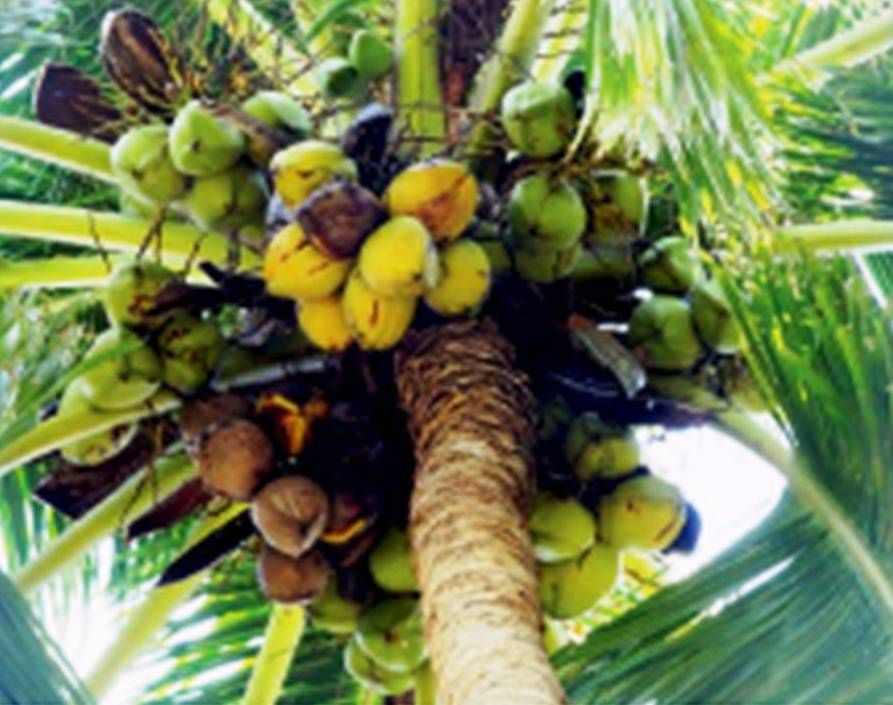Andaman Giant Tall - A promising coconut cultivar

The palms of this type occur amidst the Andaman Ordinary population. Careful selection of mother palms and seedlings is important to establish a new plantation of Andaman Giant. As the name implies, the fruits of Andaman Giant are large, round to oblong shaped, weighing over 5 to 8 kg at tender fruit stage. The palms of this variety take about 5-7 years for first flowering. The dehusked fruits are also larger than Andaman Ordinary, mostly globular, the kernel is thinner than Andaman Ordinary Tall, but the cavity volume is over 300 ml in matured fruits. The tender nut water content ranges from 350 to 600ml depending upon the stage of maturity and individual palms. The average tender coconut water per fruit is about 300ml. The palms possess dark green leaves, fruits are predominantly green with less proportion of palms with brownish fruits. The cultivar is preferred as a tender coconut cultivar by many traders as the larger fruits could be used to attract the customers to the tender nut parlor. The palms are robust growing with strong and stout stem with a prominent bole at the base of the palms, intermediate drooping of leaves. The palms of Andaman Giant are considered drought hardy, withstand heavy winds. The copra content ranges from 200 to 400g per nut with oil recovery of about 64%. The average copra content is over 240g per nut. The fruit yield per palm year ranges from 40 to 90 depending upon the management conditions.
Benefit:The palms are relatively moisture stress tolerant. A better performing selection made from Andaman Giant has been released by ICAR-CPARI as ‘KalpaDhenu’ which is popular in mainland which gave mean yield of 86 fruits per palm per year with the copra out turn of about 20kg per palm per year. Although the tender coconuts are also used for drinking purpose, it is mostly preferred for copra making, processed coconut kernel products and VCO production.
Source : Interested persons may contact: Dr. B Augustine Jerard, Principal Scientist, Email : agustinejerard.b@icar.gov.in, Phone : 9447064463 (source: Division of Horticultural & Forestry, ICAR-CIARI, Port Blair)
